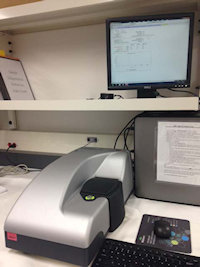 Zetasizer Nano ZS Zetasizer Nano ZS
Zetasizer Nano ZS is used for particle characterization ranging from 0.6nm to 6.0 microns and used for particle size analysis, zeta potential, molecular weight, and electrophoretic mobility of proteins. Also, the characterization of hydroxylated fullerene nanoparticles can be evaluated through Doppler electrophoresis. |
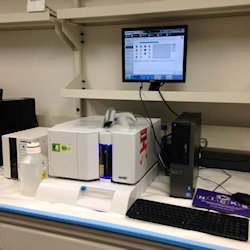 Luminex 100®/200® by Millipore Luminex 100®/200® by Millipore
Luminex 100®/200® can multiplex up to 100 analytes at once. The analysis of proteins (cytokine, chemokine, and serological panels) and nucleic acids in 96 well plate formats. Combined with MILLIPLEX® MAP magnetic bead-based multianalyte panels, MILLIPLEX® Analyst 5.1 software, can run up to 100 analytes per 96-well plate with a 25 µL sample. We have analyzed toxicity biomarkers, cellular metabolism, oxidative stress, stem cells markers. Additionally, disease markers, cancer, cell signaling, endocrine and bone metabolism biomarkers, can be analyzed. |
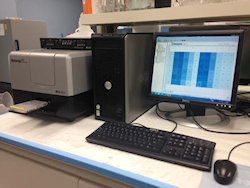 Synergy H1 Hybrid multi-mode micro plate reader by BioTek Synergy H1 Hybrid multi-mode micro plate reader by BioTek
The synergy H1 Hybrid multi-mode micro plate reader by BioTek supports top and bottom fluorescence intensity, UV-visible absorbance and high performance luminescence detection. It creates the ideal physiological environment for live-cell assays. In addition to the orbital shaker, it has CO2, O2 and 4-Zone temperature controls. |
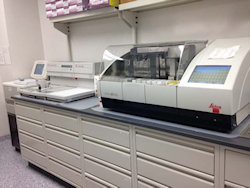 Histopathology capabilities Histopathology capabilities
Full histopathology capabilities (fixation, tissue processing, embedding, sectioning, and staining) can be performed. Samples are embedded and sectioned using the Leica microtome. Then the slides can be stained with the innovative robotic arm that moves the slides through the Leica ST5020 staining system with a computerized protocol. |
 Cryostat Cryostat
The cryostat is a microtome in a refrigerated unit used for sectioning frozen tissue. Samples are quenched in liquid isopentane cooled by liquid nitrogen to -190 degrees C. Freezing the tissue preserves the enzyme specificity and proteins so that it can be histochemically identified. There is no liquid phase at any time so it prevents diffusion of the enzymes. |
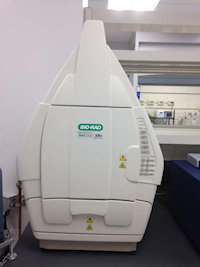
Gel Doc XR+ Imaging SystemThe BIO-RAD Gel Doc XR+ imaging system along with the Image LabTM image acquisition and analysis software provides a high-resolution gel documentation system allows for quick and easy visualization, documentation and analysis of nucleic acid and protein gels, blots and microarrays. This system supports colorimetric and fluorescence detection methods. The large imaging area can accommodate a broad range of gel sizes from large hand-cast polyacrylamide gels to small ready to use agarose gels. The Gel Doc XR+ system is capable of running a variety of protocols in conjunction with PCR and electrophoresis, molecular cloning, RNAi analysis, and genetic fingerprinting. |
CPS Disc Centrifuge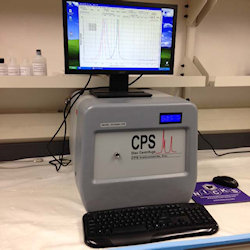 The CPS Disc Centrifuge (DC24000) is a high resolution characterization instrument for measuring particle size ranging from 0.01 µm to 40 µm. This centrifuge separates particles by size using centrifugal sedimentation within an optically clear spinning disc with a sucrose gradient. Particles sediment within an optically clear, rotating disc and when they approach the edge of the rotating disc, the particles block/scatter a portion of a light beam that passes through the disc. This change in light intensity is continuously recorded, and converted by the operating software into a particle size distribution. |
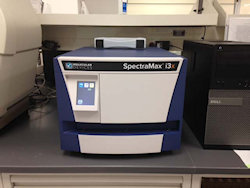
Spectra Max i3The Spectra Max i3 is used for ultraviolet, fluorescence and photoluminescence characterization of nanoparticles and to assess their biomolecular interactions, cell association and delivery. In addition, it may be used to investigate how nanoparticles effect the structure-function, activity and kinetics of model enzymes and RNA molecules. |
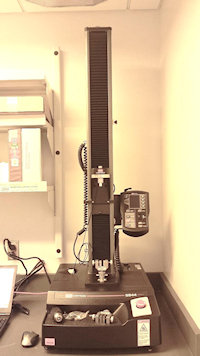
Instron 5944 Mechanical testing SystemThe Instron 5944 mechanical testing system can perform tensile, compression, flexure, peel, tear, cyclic, and bend tests of variety of materials such as medical devices and biomaterials, textiles, elastomers, food, microelectronics, wire, paper, and plastic film. It is ideal for low-force, low-capacity testing up to 2 kN. Tension and compression grips can be equipped. |
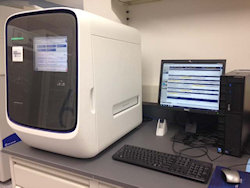
QuantStudio 7The QuantStudio is a versatile real time PCR instrument that allows for 5 color detection in 96 and 386 well plates. The QuantStudio is coupled with predesigned PCR array plates that allows for in vivo or in vitro chemical and nanoparticle effects on gene expression from very select pathways. This instrument can be used for multiple applications such as miRNA profiling, SNP genotyping, copy number variation, protein thermal shift, high resolution melt, and pathogen detection. |
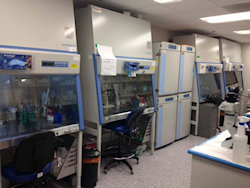
Tissue culture suiteThe tissue culture suite offers a widely used area for training graduate students and postdoctoral fellows in cell tissue techniques. Cryopreserved cells and in vitro propagation are used for evaluating chemicals and nanoparticle effects in various primary cells, and cell lines. |
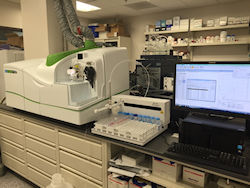
ICPMSThe PerkinElmer NexION® 300D ICP-MS is used for the quantitative analysis of engineered nanoparticles in biological systems. This instrument can measure metal nanoparticles in cells and tissues at parts per billion (ppb) and parts per trillion (ppt). This equipment provides precise quantitative analysis of metal nanoparticles. |
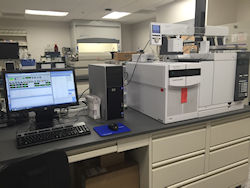
GC/MS/MSThe Agilent 7000B Quadrupole GC/MS/MS is used for the detection of organic and semi-volatile components in complex matrices. It is also used to detect the generation of organic chemicals due interaction of functional groups on metal oxides and metallic nanomaterials. This system has a wide range of applications from food testing, environmental remediation, and nanotoxicology. |
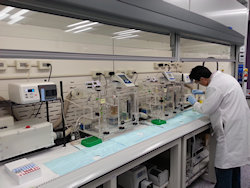
Perfusion ChambersOrgan perfusion chambers were custom made and used for in vitro percutaneous absorption, penetration, cutaneous metabolism, transdermal delivery (active and passive) studies using the isolated perfused porcine skin flap (IPPSF). This is a perfused model that allows for skin pharmacology and toxicology studies as well as drug distribution experiments using compartmental and physiological-based pharmacokinetic models, to be conducted in a viable skin preparation having a normal anatomical structure and a functional microcirculation. The skin flap is first created in weanling Yorkshire/ Landrace pigs, harvested after two days and then placed in the computer-controlled and temperature-regulated perfusion chamber for up to 24 hrs. These chambers are housed under a fume hood so that volatile chemicals (e.g. jet fuels and other caustic agents) can be safely conducted. The correlation of IPPSF data to in vivo studies can be studied along with biochemical, physiological and histological responses to the skin when topically applied toxicants (e.g. vesicants, irritants) are exposed. Currently, the IPPSF is an ideal in vitro model to investigate the local biodistribution of nanoparticles after controlled arterial infusions. |
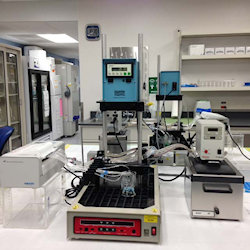
Diffusion Flow-Through CellsThe flow-through diffusion cell system (Bronaugh type flow-through cells) allows for in vitro assessment of dermal absorption or transdermal flux of topically applied drugs or chemicals. This is a dermatomed skin preparation where over 28 pieces of skin can be maintained and viable and transdermal flux assessed, either by use of radioisotopes or classic analytical determinations (GC-MS/ LC-MS/MS, HPLC, etc). Because of the ability to conduct large number of replicates, formulations and vehicle mixture effects on an individual drug or chemical absorption can be assessed. |
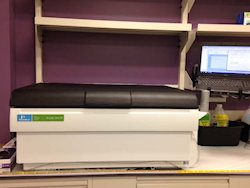
Liquid Scintillation Analyzer (LSA)The Tri-Carb® 2910 TR is a computer controlled benchtop liquid scintillation analyzer (LSA) for detecting 14C- labeled compounds. It used in this laboratory to assess transdermal flux of labeled drugs in the flow-through diffusion cell system. |